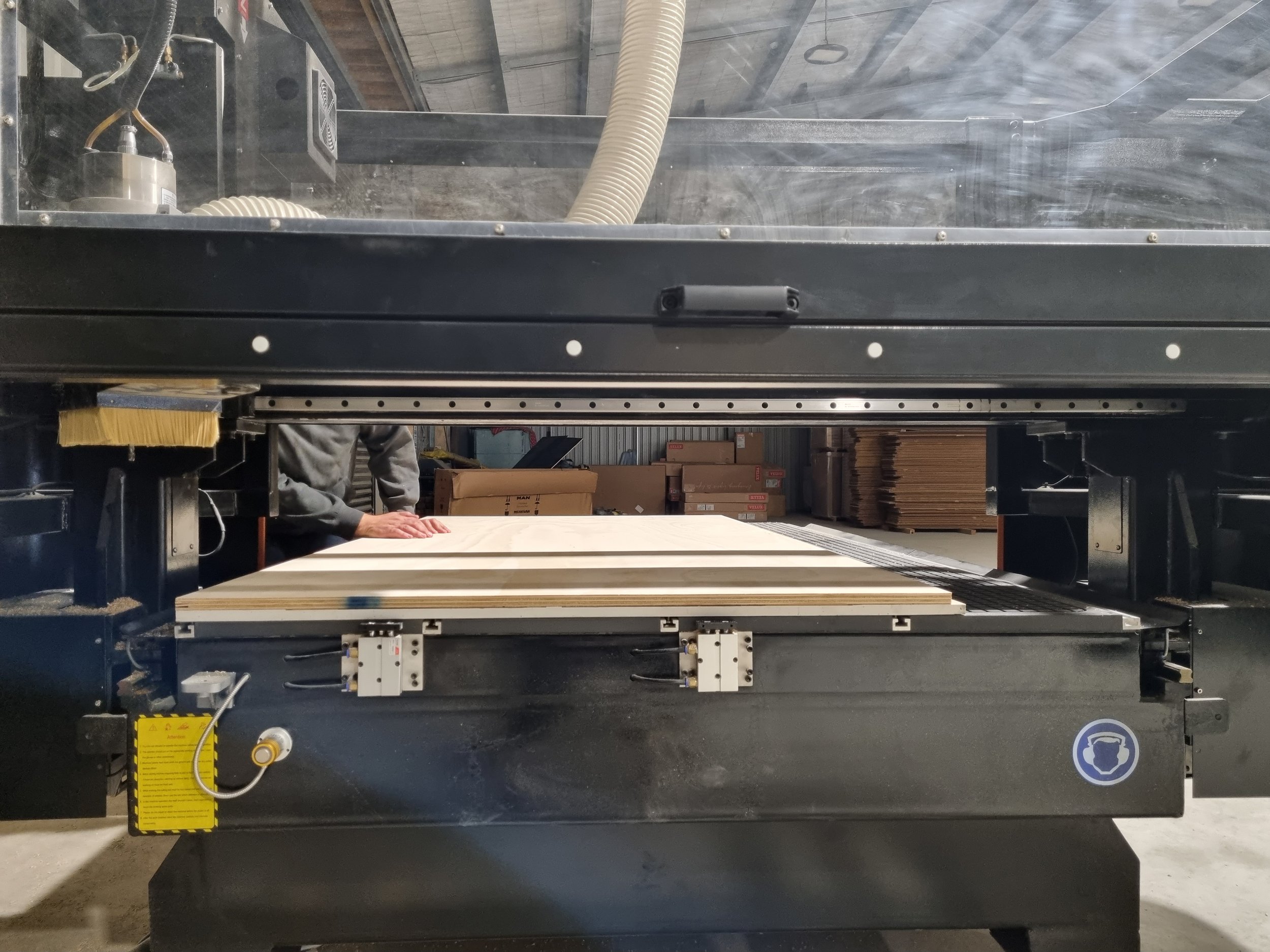
Building healthy, sustainable and affordable homes for our whānau.
Kia Hanga
For our housing kaupapa we started with our whānau and had wānanga discussing how we could:
bring our whānau home to Wairarapa?
build healthy, affordable and sustainable housing for whānau in Wairarapa?
We explored existing housing options worldwide and looked at WikiHouse - a digitally manufactured building system which aims to democratise and simplify the construction of sustainable, resource-light dwellings. Returning power back to the people. A kaupapa which aligns well with hapū based solutions.
We have been testing out the WikiHouse concept with 1/6th scale prototypes since August 2020. This has shown our whānau what is possible. From these scale prototypes we were able to gain skills and learnings. Utilising these prototypes we have raised funds to purchase a CNC Router that would manufacture the WikiHouse Skylark building system. This system was launched in February 2022 and allows us to build homes in a modular method.
We have also been working with Kaumātua in Wairarapa incorporating Mātauranga Māori into aspects of our builds. Although they may not be able to be implemented straight away, the continuous innovation of taking our knowledge into what we build in the future is very important.
How are we building?
We are using what is called a prefabricated printer. This is a CNC Router, is a machine that has a drill bit. This machine will cut out the digital designs we load into the machine.
A CNC Router is a Computer Numerical Controlled machine that uses computer programming to control a high speed rotating cutter to perform cutting and shaping operations
We are very grateful to the community that have given money to our kaupapa to allow us to purchase the CNC Router. Especially we would like to thank the Twitter community, Rangitāne o Wairarapa and Māori Women’s Welfare League Te Tonga o Wairarapa.
Utilising the CNC Router and the building systems below we are potentially able to print and erect whare in weeks, rather than months.
WikiHouse
“Simple, beautiful, zero-carbon building, for everyone.”
WikiHouse reduces building waste, creates re-useable components and is highly insulated.
Their open source project allows for anyone around the world to utilise and share these designs.
Our Kia Hanga project team has been working with WikiHouse, BRANZ and PTL Engineering to bring WikiHouse Skylark (released Feb 2022) to New Zealand to ensure it meets our building standards.
We are also looking at mātauranga Māori solutions to embed into our future builds. Although these may challenge our building codes, we know our Indigenous solutions work.
The WikiHouse SkyLark Prototype at Te Whare Hangahanga workshop in Carterton.
XFrame Limited.
“XFrame is a recoverable and reusable framing system for the next generation of sustainable construction.”
On our journey with WikiHouse we stumbled on the XFrame framing system. In discussions with the team we realised that their project aligned hugely with our principles and so we have been in conversations with them about how we could prototype and utilise this system for our whānau.
Our principles focus us on
-

Giving back to Taiao
Our goal is to ensure that any solutions we deliver are on their way to reducing waste, promoting and support Papatūānuku as much as we can. We are to live in harmony with taiao (environment).
-

Mātauranga Māori
Embedding in our tīpuna (ancestors) nowledge throughout aspects of this build. Researching and reviewing how our ancestors once built whare and the techniques we can utilise or adapt for today’s solutions.
-

Hauora (Health)
Ensuring that our people will be healthy through te whare tapa whā looking at the tinana (physical), wairua (spiritual), hinengaro (mental) and whānau (family) health. Everything within a whare build should be supporting each of these aspects.
-

Affordability
Looking at ways to reduce the price through reducing timeframes and skillsets that are required to build whare. In addition looking at non-traditional ways for our whānau to obtain home ownership.



